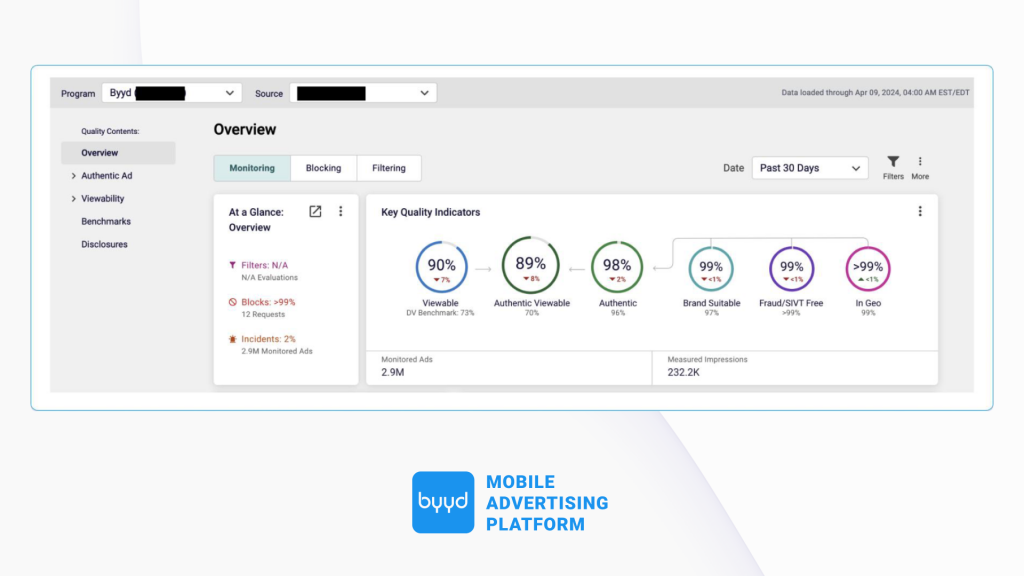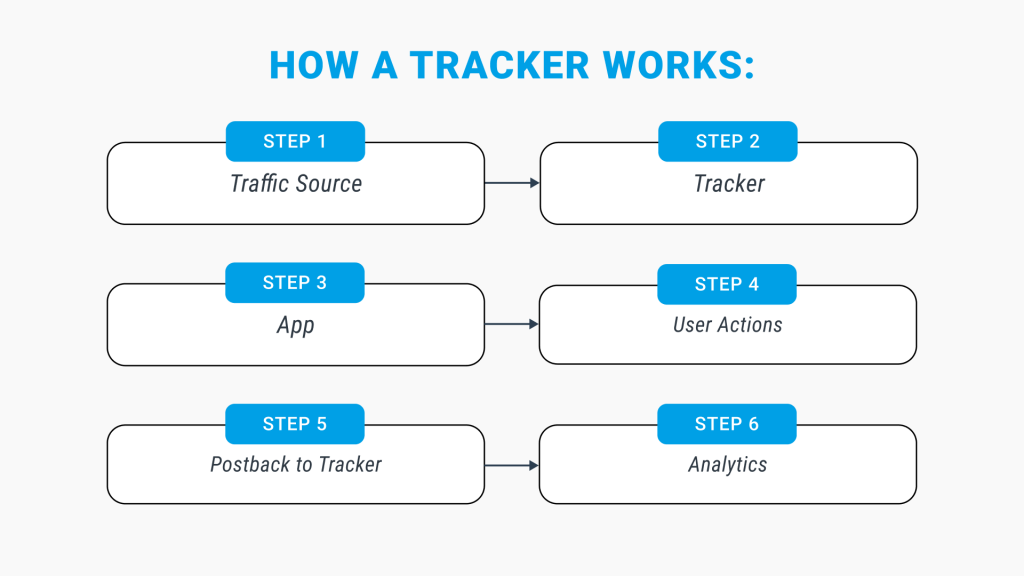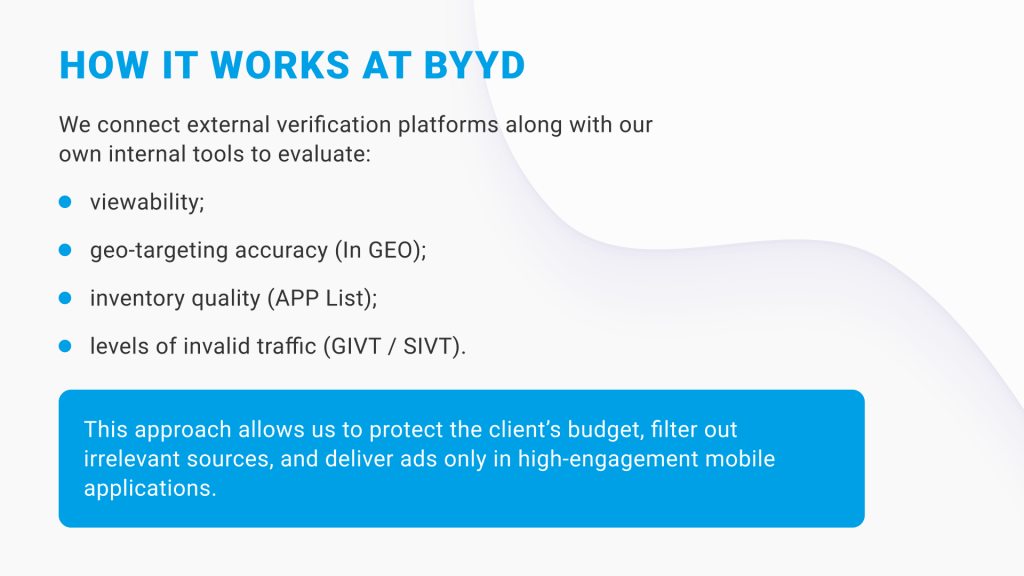Tracking systems in Mobile Advertising: How They Measure Traffic Quality
To run successful advertising, it’s essential to understand the quality of traffic your campaign delivers and what users actually do after viewing an ad. These insights allow marketers to evaluate campaign effectiveness and optimize it properly.
Without transparency, budgets are lost, the risks of buying inefficient impressions increase, and optimization turns into guesswork. Trackers help avoid this. They show brands the real behavior of their audience and allow us to manage campaigns efficiently and accurately.
This article explains how tracking systems measure traffic quality and why they are essential in mobile advertising.
What trackers are
Tracking systems are tools that record all key events in mobile advertising: impressions, clicks, and traffic quality. In essence, they act as a “control checkpoint” through which traffic passes so a brand can see exactly what results the ads are generating and how the budget is being spent.
Tracking is a critical part of traffic management.
It helps to:
- Objectively evaluate traffic quality
- Quickly identify inefficient sources
- Reallocate the budget effectively
A tracker makes the process transparent and enables fast, data-driven optimization.
How trackers work
Simply put, tracking systems act as an intermediary between the ad and the user’s final action.
When an event occurs — an impression or a click — the tracker receives a signal (a postback) and logs it in the statistics. From there, it collects and structures data: from the number of impressions to engagement depth.
Trackers operate in two ways:
- Impression pixel (records that the banner was shown to the user)
+ a tracking click link (records that the click happened) - Full code-based placement, where the entire banner loads through HTML with all tracking tags embedded inside.
Both pixels and code collect data, which advertisers then see in the verification dashboard.
As a result, the brand receives a clear picture:
Which placements performed well, what traffic quality each source delivered, and which settings need optimization.
Tracking systems: the invisible guardians of brand safety in digital advertising
There is still a myth in the industry that trackers are intrusive, complicated, or “unnecessary” in advertising campaigns. In reality, it’s the opposite. Tracking systems are a critical tool that protects the brand, ensures transparency, and helps advertisers make decisions based on facts — not assumptions.
Why trackers are critically important
Trackers record the user’s path from impression to action and show what results the ad actually produces. But their value goes far beyond analytics — they also ensure traffic quality and brand protection.
With tracking systems, advertisers can:
- Identify fraud in real time: fake impressions, fake clicks, bot traffic, device emulators
- Control context: check where ads are actually shown and whether placements meet brand requirements
- Ensure transparency: advertisers get a complete breakdown of every event, regardless of campaign scale
The evolution of tracking: from cookies to a privacy-safe data ecosystem
The world is moving away from third-party cookies, and trackers are evolving accordingly. The industry’s goal is to find the balance between privacy and measurement.
Trackers maintain this balance: they collect only the data necessary to evaluate campaign quality, without touching users’ personal information.
What types of data trackers collect
In-app advertising enables integration with third-party verification tools that allow brands to monitor not only quantitative metrics but also qualitative indicators:
- GIVT (General Invalid Traffic): suspicious but not necessarily malicious activity (duplicate requests, technical errors).
- SIVT (Sophisticated Invalid Traffic): malicious fraudulent traffic (simulated clicks, fake impressions).
- In GEO: how accurately the traffic matches the targeted region/city/country.
- Viewability: whether the ad was actually visible to the user and for how long.
- APP List: the list of mobile apps where the ad appeared; used for verifying inventory quality, excluding irrelevant apps (Black List), and analyzing performance.
Verification services BYYD works with
We use a variety of trackers, each designed for specific tasks.
Tracking systems that measure impression quality, clicks, viewability, GIVT/SIVT, placement quality, and GEO accuracy:
- Weborama
- Adriver
- Gemius
- MOAT
- Adserving
- DCM
- IAS
- DoubleVerify
- Yandex Mediametrika
Trackers that measure in-app traffic quality and events such as installs:
- AppsFlyer
- Adjust
- AppMetrica
Additional analytics systems for landing page behavior and traffic source attribution:
- Google Analytics
- Yandex Metrika
Why trackers will remain indispensable in digital advertising
The future of digital advertising is impossible without tracking. It ensures the three core pillars of a sustainable advertising ecosystem:
- Honest measurement
- Brand protection
- Transparent optimization
Trackers are not just a technical tool. They are the foundation of modern digital advertising and its long-term development.
At BYYD, trackers are used as a brand-protection instrument — ensuring that mobile campaigns deliver maximum value and that every impression meets quality standards.
Get in touch with us
For over 10 years, the BYYD platform has been helping companies run mobile advertising campaigns and continuously improving its tools. To learn more about in-app and explore BYYD platform cases, visit the website.
Found this helpful? Share it with your friends and colleagues!
For consultations and partnership inquiries:
- Submit a request on our website
- Email us at hello@byyd.me


